Our Environment
Our Environment is the Chapter of Social Science that covers the Syllabus of class 10 gives the basic idea about environment and ecosystem their effect on the earth.
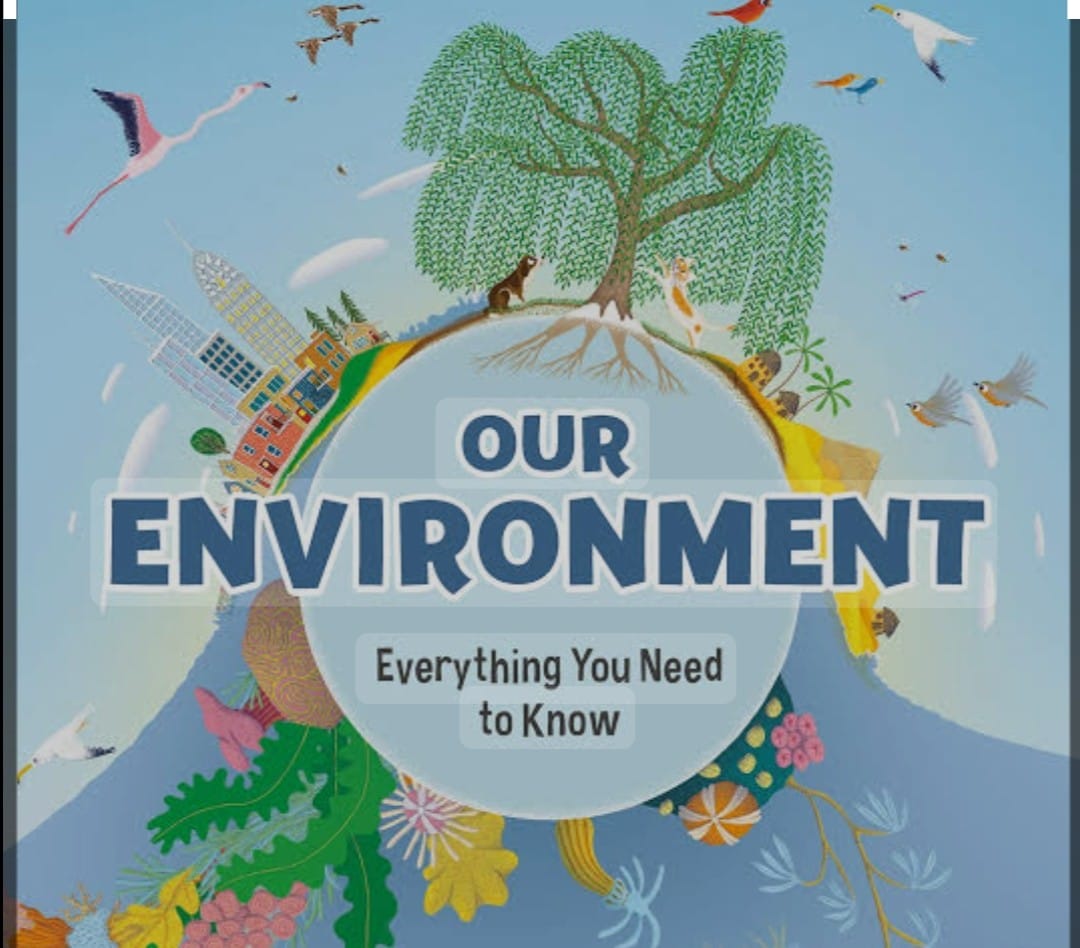
Eco System :
All the organism interacting with each other in the aera together with the non living constituents of the environment form the ecosystem ie forest, pond etc.
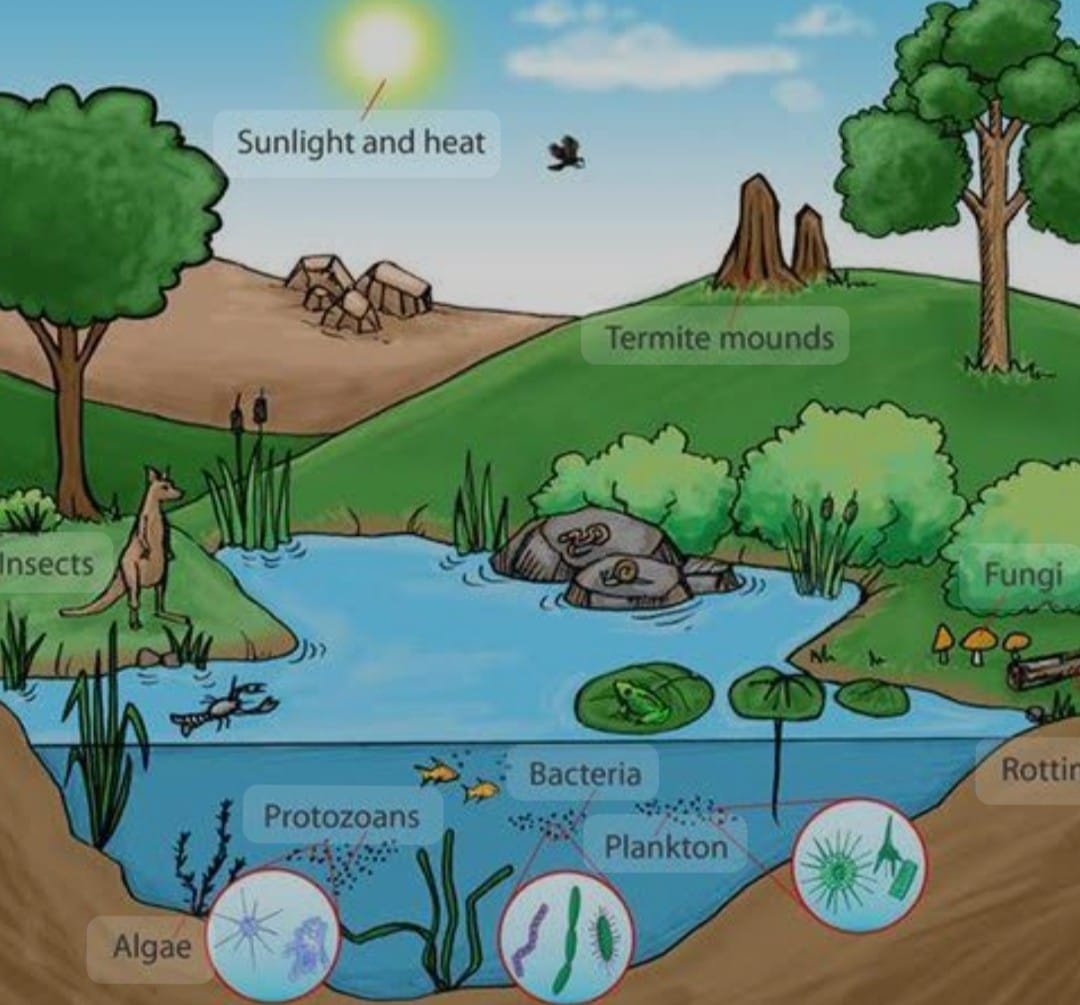
There are two type of ecosystem
a) Natural Ecosystem that is which exist in nature by its own e.g. pond, forest, lake.
b) Artificial Ecosystem when the ecosystem is formed by man such as garden, fields, farm, aquarium.
The main component of ecosystem is
a) Abiotic Component which consist of organic and inorganic substances as well climatic factors such as , land, water and air
b) Biotic Component which consist of all living organism.
It includes plant and animals they are further classified into producer or autotrophs they are those organisms which prepare their own food all green plants come under this category.
Second are Consumers which are those organisms that are unable to make their food by themselves, consume the food produce by producers or eat the other organism
Third are decomposers in this category Bacteria or Fungi breakdown the complex organic substances in the dead plants and animals into the simpler organic substances.
TYPES OF CONSUMERS:
a) Herbivorous those animals that are plant and grass eating e.g. cow
b) Carnivorous are the flesh-eating animals e.g. tiger
c) Omnivorous are both plant and grass as well as flesh eating animals such as Dog. d) Parasites live on the body of host take food from them e.g. lice or cascutta
FOOD CHAIN:
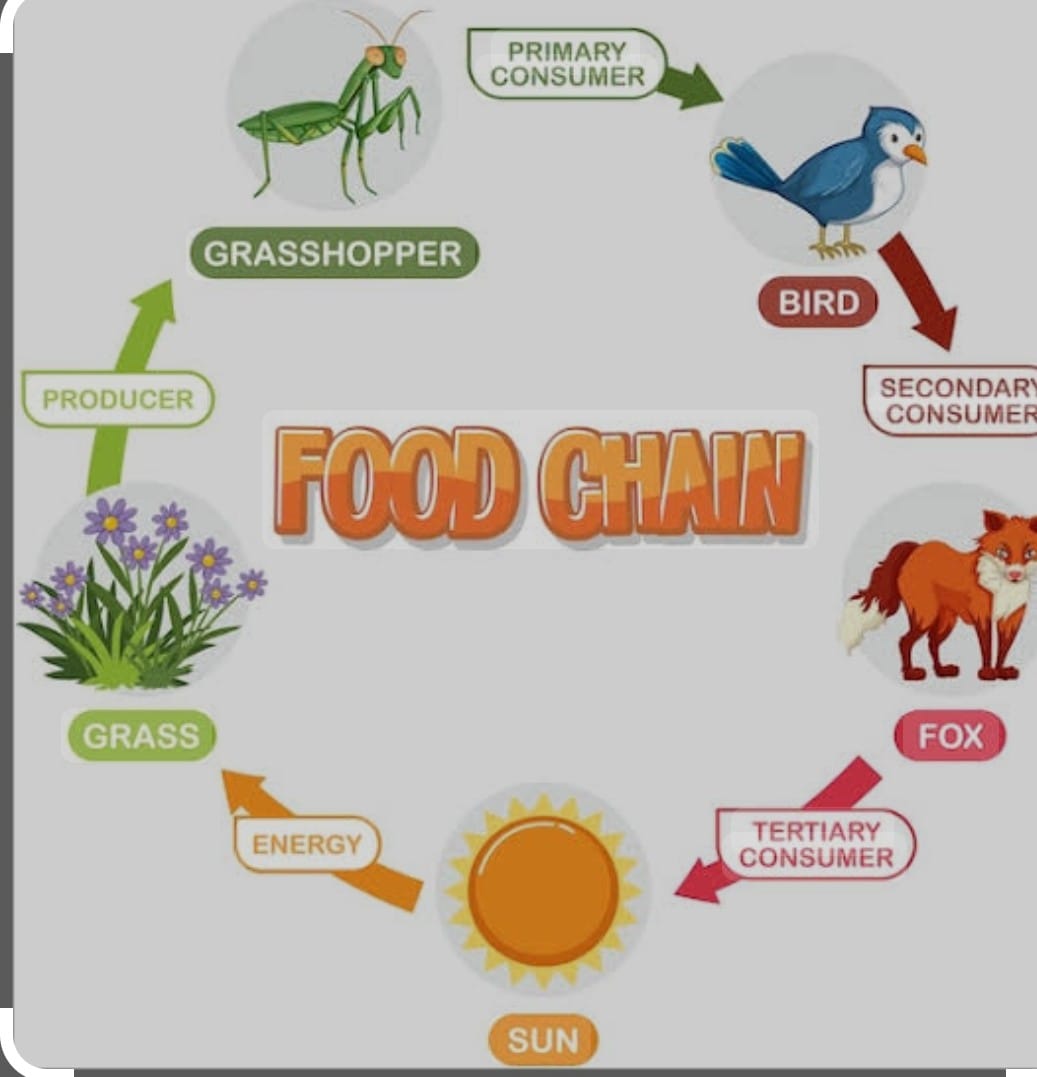
It is the series of organisms in which one organism is the food for another .In this food chain various steps where transfer of energy takes place is called Trophic Level
GRASS——-> DEER——-> LION..
FLOW OF ENERGY IN TROPHIC LEVEL.
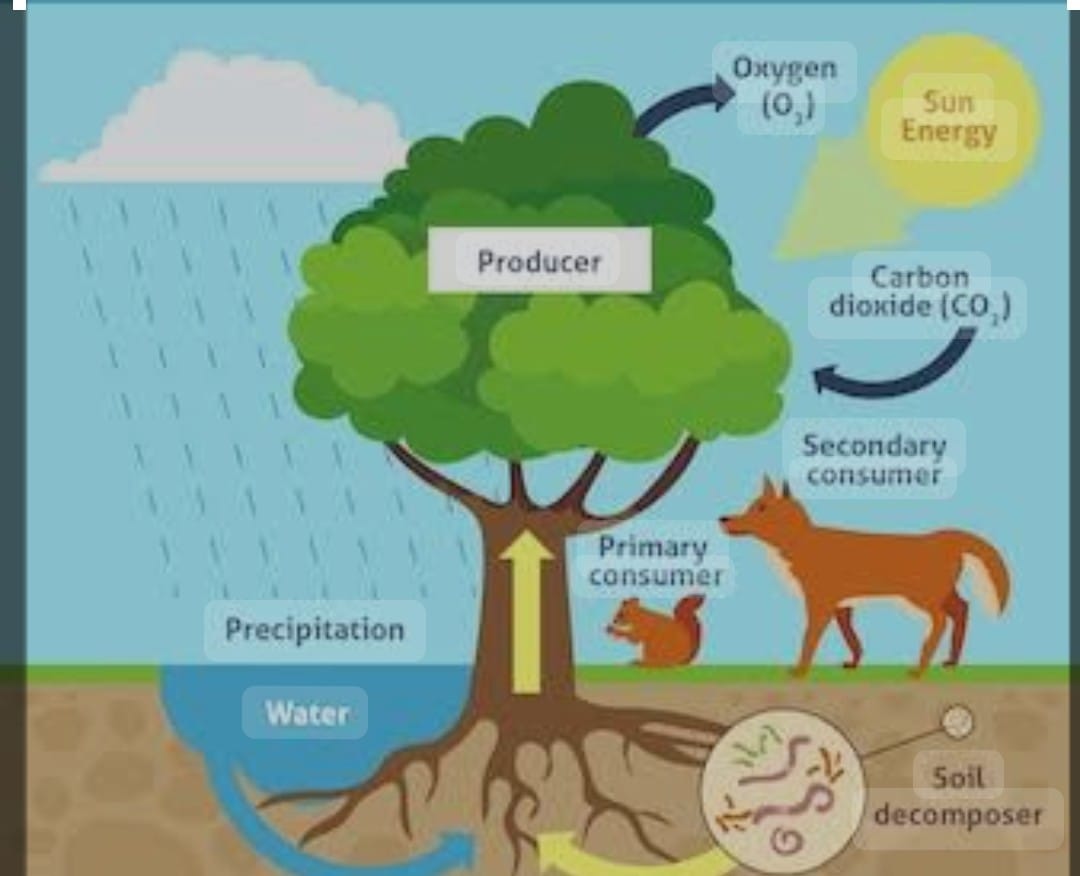
The flow of energy in food chain is unidirectional. Green plants take 1 % of solar energy from the sun, further convert it into food energy.
10 percent law which states only 10 % of energy is transferred to the next tropic level. Remaining 90% of energy is lost in the environment in form of heat, some amount of energy is utilized in digestion, doing work, growth of body and reproduction.
It is assumed that an average of 10% of eaten food turn into the body made available for the next level of consumers. The gradual decrease of energy food chain contains 3 to 4 tropic levels.
Suppose producer gets 1000 KJ of energy from sun, when primary consumer consumes from the producer get the energy of 100 KJ than these primary consumers are consumed by secondary consumers get the energy of 10 KJ than comes the tertiary consumers get 1KJ by consuming the tertiary.
BIOLOGICAL MAGNIFICATION:
It is the concentration of harmful chemicals increases with every next tropic level in food chain. It is very surprising that the maximum concentration of such chemicals is present in the bodies of the human being because he occupies top level in any food chain.
FOOD WEB
There are large number of food chains present in nature which are interconnected to each other in one way or the other that form food web.
ENVIROMENTAL PROBLEMS
We have been highly affected by the change of environment physically as well as by activities that leads to pollution, deforestation, global warming etc.
OZONE LAYER:
Ozone layer is the protective blanket in the atmosphere around the earth which absorbs the ultraviolet (UV) rays coming from the sun to the earth This ozone layer protect the living being on the earth from many health hazards such as skin cancer, destruction of plants, It is present at the higher level of atmosphere/stratosphere deadly poisonous at ground level.
FORMATION OF OZONE
First of all Oxygen molecule is broken into Oxygen atom by high energy UV rays than this broken Oxygen atom again combine with Oxygen molecules form Ozone molecule.
O2———- high energy UV rays———-> O + O
O +O2 ————————-> O3 ( ozone)
DEPLETION OF OZONE LAYER:
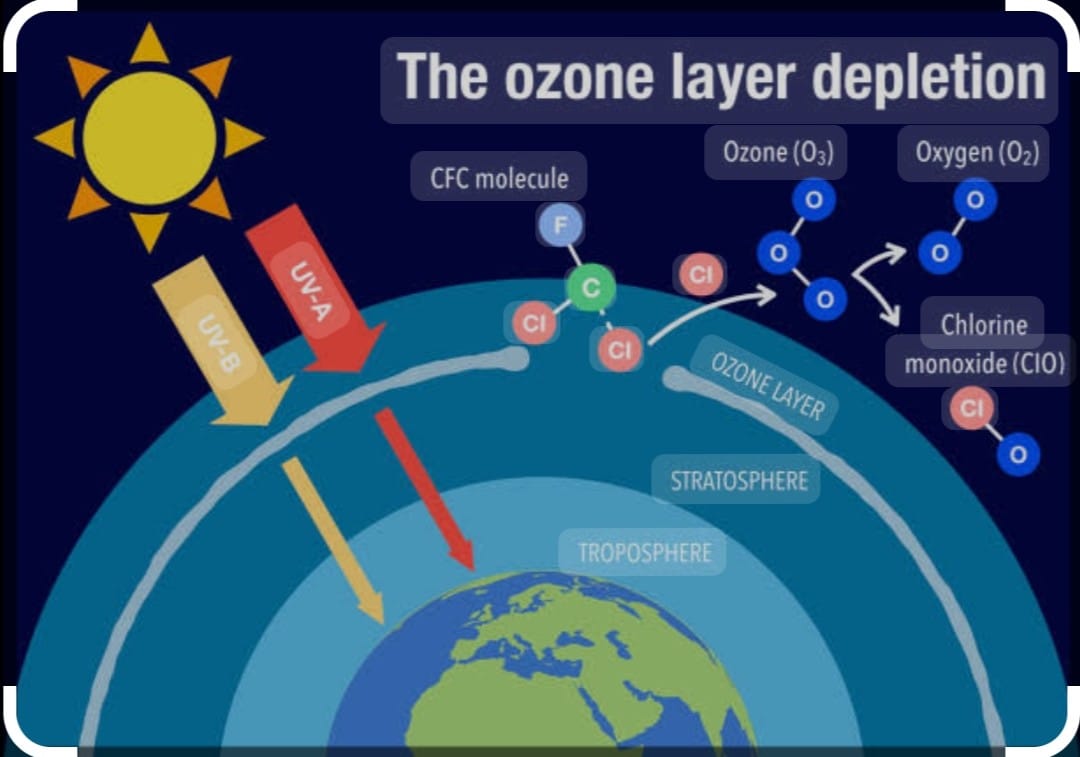
It is the decrease in thickness of ozone layer over the Antarctica was first noticed in 1985 which was termed as ozone hole. This is due to excessive use of synthetic chemicals Chlorofluorocarbon (CFC) which is mainly used in refrigerators, A. C’s , fire extinguishers, aerosol sprays. etc.
United Nation Environment Programme (UNEP) succeeded in banning CFC production in 1986 among all the countries but the success was not because of industrial development competition.
GARBAGE DISPOSAL
It is very important to improve our lifestyle that can be possible if we care about the disposal of waste or garbage. There are two kinds of garbage material
a) BIODEGRADABLE the substances which can be decomposed by the action of micro – organism this is called biodegradable waste. for example, fruits, vegetables peels, cotton, jute, dung, paper etc.
b) NON BIODEGRABLE The substances which cannot be decomposed by the action of microorganism this is called non bridgeable wastes such as plastics, polyethene, metals synthetic fibres, radioactive wastes.
microorganisms release the kind of enzymes which help to decompose the materials, but these enzymes are specific in their action but they don’t decompose all the material.
HARMFUL EFFECTS OF FARMING TO ENVIROMENT
Now a days farmers use fertilizers which negatively affect the soil and kill useful microbes, use of non-biodegradable chemical pesticides leads to biological magnification, excess cropping also effects in soil fertility, excess use ground water that lowers the water table, burning of stubble create air pollution.
Methods of waste disposal: There are various method by which we can dispose of the waste of society. They are.
a) INCINERATION
It is the waste treatment process, which is also a thermal treatment, in this process the waste is converted into ash mainly used to transform medical wastes.
b) BIOGAS PLANT:
Biodegradable waste can be used in the biogas plant to produce biogas and manure
c) SEWAGE TREATMENT:
The drain water can be cleaned in sewage treatment plant before getting into river.
d) LAND FILLING.
The wastes are buried in low lying areas and are compacted by rolling with the help of bulldozers.
d) COMPOSTING:
Organic wastes are filled in the compost pit and covered with the layer of soil for three or more months the garbage changes into manure.
e) RECYCLING:
Non – biodegradable waste are recycled to make the new items
f) REUSE:
It is a conventional method to use the item again use of newspaper in making
HUMAN PRACTICES FOR THE PROTECTION OF ENVIRONMENT:
We should separate biodegradable waste from non-biodegradable waste before disposing it of, we must use more unleaded petrol and other sources of energy must be used for vehicles keeping the engine proper with timely service, Tyre properly inflated to right pressure. Gunny or paper bags must be encouraged instead of polythene or plastic bags. Human activities such as gardening, rainwater harvesting, use of compost in place of fertilizers must be encouraged to protect our environment.
Read More : Manufacturing Industries
Read More : Mineral and Energy Resources
Follow us on : Facebook
Follow Us on : Instagram